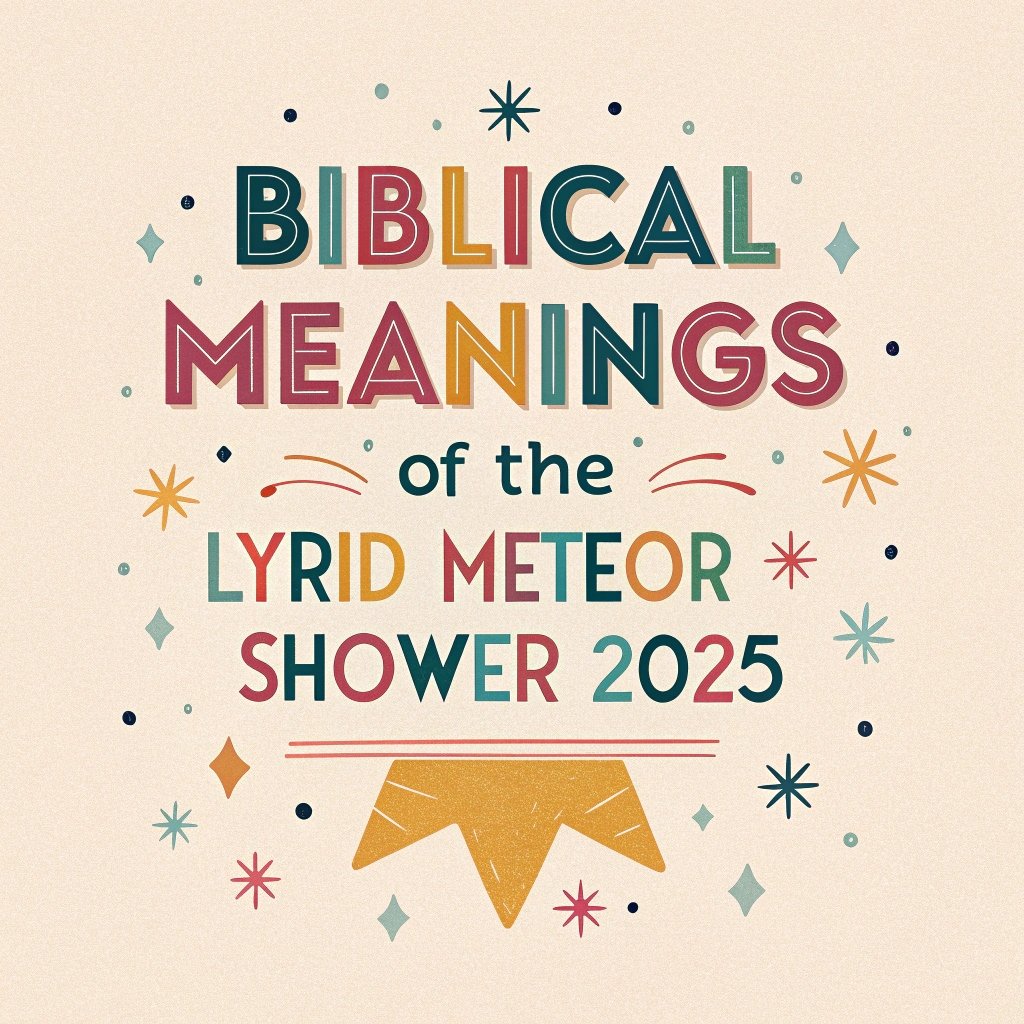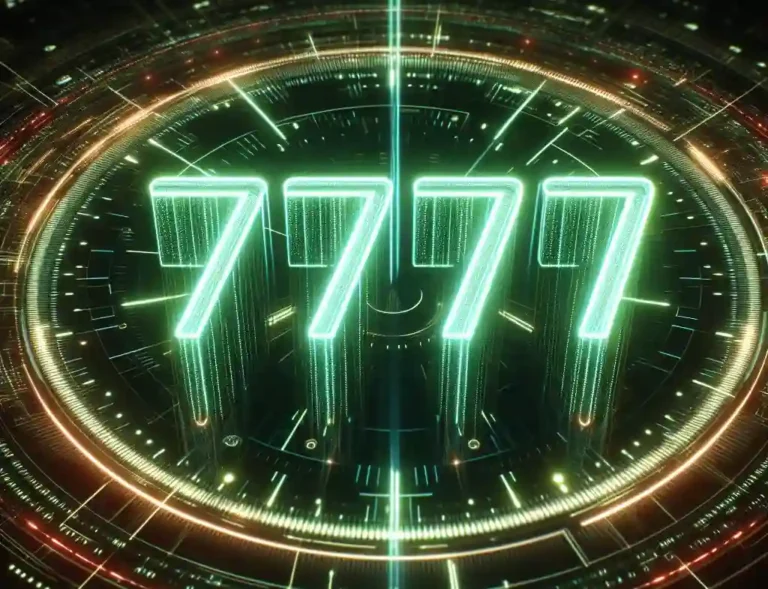Biblical Meanings of the Lyrid Meteor Shower 2025
Are you ready to look up at the night sky in April 2025 and wonder what it all means? The Lyrid meteor shower is coming, peaking on April 21-22, and it’s not just a dazzling display of shooting stars.
For those who love the Bible, this event sparks curiosity about its deeper spiritual significance. Does God use the heavens to speak to us?
Could these fiery streaks carry messages of hope, judgment, or wonder? In this blog post, we dive into the Biblical meanings of the Lyrid meteor shower 2025.

What Is the Lyrid Meteor Shower 2025?
The Lyrid meteor shower happens every year in late April. In 2025, it runs from April 16 to April 25, with its peak on April 21-22. Meteors streak across the sky, radiating from the constellation Lyra, near the bright star Vega.
These shooting stars come from debris left by Comet Thatcher, which orbits the sun every 415 years. Earth passes through this debris, and the particles burn up in our atmosphere, creating a light show.
On a good night, you might see 10 to 20 meteors per hour. Some years, rare outbursts push that number to 100!
Science tells us the Lyrids are one of the oldest recorded meteor showers. Ancient Chinese texts from 687 BC mention stars falling like rain. That’s over 2,700 years of history!
For 2025, the moon will be a waning crescent during the peak, giving us darker skies for better viewing. You don’t need a telescope—just a clear night, a dark spot away from city lights, and patience. Look up after midnight, and the show begins.
But here’s where it gets fun. Beyond the science, people have long seen meaning in the stars. The Bible often uses the heavens to point to God’s power and plans.
Could the Lyrids hold a spiritual message? Think about it: tiny dust particles from a comet light up our sky thousands of years later. It’s a reminder of how small things can shine brightly.
In scripture, stars often symbolize God’s creation or His promises. Genesis 1:14 says God made lights in the sky for signs and seasons. Does that include meteors? Let’s explore that idea as we go!
How Does the Bible View the Heavens?
The Bible loves the sky. It’s not just a backdrop—it’s a canvas God uses to show His glory. Psalm 19:1 declares, “The heavens declare the glory of God; the skies proclaim the work of his hands.”
Every star, every meteor, points back to the Creator. The Lyrid meteor shower 2025 fits right into this picture. Those streaks of light aren’t random to a believer—they’re part of God’s design.
In Genesis, God creates the sun, moon, and stars on the fourth day. He gives them a job: to mark time and signal events. “Let them be for signs and for seasons,” Genesis 1:14 says. Signs don’t always mean miracles.
Sometimes they’re reminders of God’s order. The Lyrids come every April, like clockwork. That regularity could reflect God’s faithfulness—He keeps the universe spinning, year after year.
The Bible also ties stars to big moments. Think of the star over Bethlehem in Matthew 2:2. It guided the wise men to Jesus. Meteors aren’t stars, but they’re close cousins—bits of cosmic dust glowing bright.
Could the Lyrids be a nudge from God? Maybe not a specific prophecy, but a call to look up and remember who’s in charge. Job 38:31 asks, “Can you bind the chains of the Pleiades or loose the cords of Orion?” God’s power over the cosmos is clear. The Lyrids, small as they are, still shout His greatness.
For 2025, picture this: you’re outside, watching meteors zip by. It’s easy to feel small under that vast sky. But that’s the point. The Bible says God knows every star by name (Psalm 147:4). If He tracks the stars, He tracks you too. The Lyrids could be a personal invitation to trust Him more.
Do Meteors Symbolize Judgment in Scripture?
Meteors can look dramatic—fiery trails blazing through the dark. It’s no surprise some connect them to judgment in the Bible. Revelation 8:10-11 describes a “great star falling from heaven, burning like a torch.” It poisons waters and brings woe. Sounds intense, right? Could the Lyrid meteor shower 2025 tie into that?
Let’s break it down. In Revelation, falling stars often mean trouble. They’re tied to end-times events—God’s wrath on a rebellious world. The Lyrids aren’t one big star, though. They’re a shower of tiny fragments. Still, their fiery descent might remind us of those passages. Luke 21:25 mentions “signs in the sun, moon, and stars” before Christ’s return. Meteors could fit that bill, at least symbolically.
But here’s the flip side. Not every meteor shower signals doom. The Lyrids happen yearly—they’re predictable, not sudden disasters. In 2025, they’ll peak on April 21-22, just like always. That doesn’t scream apocalypse. Instead, they might echo God’s justice in a quieter way.
Deuteronomy 32:41 says God “sharpens His flashing sword” to judge. Meteors flash too, but they burn out fast. Maybe they’re a hint of judgment’s certainty—real, but not yet here.
I love how this balances awe and warning. Watching the Lyrids, you might feel both. They’re beautiful, yet they remind us God holds power over all things. In 2025, as you spot those streaks, think about His mercy too. Judgment’s coming someday, but today, He’s still calling us to Him.
Can the Lyrids Represent God’s Promises?
Stars and promises go hand in hand in the Bible. God tells Abraham in Genesis 15:5, “Look up at the sky and count the stars—if indeed you can count them. So shall your offspring be.” That’s a big promise! The Lyrid meteor shower 2025 could carry a similar vibe. Meteors aren’t stars, but they shine like them, fleeting yet unforgettable.
Imagine this: each meteor is a spark of God’s faithfulness. The Lyrids come from Comet Thatcher’s debris, scattered long ago. Yet they still light up our sky in 2025. That’s like God’s promises—made ages past, still glowing today.
Hebrews 11:12 says Abraham’s descendants became “as numerous as the stars in the sky.” The Lyrids, with their 10-20 meteors per hour, might not be countless, but they hint at abundance.
There’s a personal angle too. God’s promises aren’t just for Abraham—they’re for us. Romans 4:16 says we inherit that same hope through faith. Watching the Lyrids streak by, you might feel it: God keeps His word. Even rare outbursts, like the 100-meteor hours seen in 1982, could mirror how God sometimes exceeds expectations.
In 2025, the Lyrids peak under a waning crescent moon—perfect for seeing more. It’s a chance to reflect. Those meteors burn bright, then fade. God’s promises don’t fade. They’re steady, like the cycle that brings the Lyrids back each year. So, grab a blanket, look up, and let the sky remind you: He’s got you covered.
Are Meteors Messengers of God?
The Bible loves messengers. Angels pop up all over, delivering news from God. Could meteors play that role too? The Lyrid meteor shower 2025 might make you wonder. They streak across the sky, grabbing attention. Are they saying something?
Scripture gives us clues. In Matthew 24:29, Jesus says, “The stars will fall from heaven” before His return. Meteors fit that image—falling, flashing, gone. The Lyrids aren’t a one-off event, though. They’re annual, tied to Earth’s orbit. Still, their sudden brilliance could mimic a divine heads-up. Think of them as cosmic Post-it notes: “Hey, I’m up here!”
Then there’s the angel angle. Revelation 9:1 mentions a “star that had fallen from heaven to earth,” linked to an angel. Meteors aren’t angels, but their fiery paths might symbolize heavenly action. In 2025, as the Lyrids peak on April 21-22, picture this: each streak a whisper from God, urging us to listen.
I find this idea exciting. The Lyrids don’t talk, but they show up right on time. That’s a message in itself—God’s order rules the sky. Psalm 148:3 calls the sun, moon, and stars to praise Him. Meteors join that chorus, flashing for a moment to point us upward. Next April, watch them and ask: what’s God saying to you?
How Do the Lyrids Connect to Creation?
Creation is God’s masterpiece, and the Lyrid meteor shower 2025 fits right in. Genesis 1:16 says God “made the stars also.” Meteors come from comets, which come from the solar system’s early days. They’re leftovers of God’s handiwork, still shining after thousands of years.
The Lyrids tie to Comet Thatcher, last seen in 1861. Its debris keeps giving us this shower, peaking April 21-22 in 2025. That’s wild—dust from ages ago lights up our sky now. It shows God’s creation has staying power. Romans 1:20 says, “His invisible attributes… have been clearly perceived… in the things that have been made.” Meteors make that tangible.
Think about their journey. Tiny particles zip through space, hit our atmosphere, and glow. It’s a mini-drama of creation’s energy. The Bible doesn’t mention meteors directly, but Job 38:7 says the “morning stars sang together” at creation. Maybe the Lyrids are an echo of that song, a fleeting encore.
For me, this adds wonder to the Lyrids. In 2025, you can watch them from a dark spot, no gear needed. They’re proof God’s work isn’t static—it moves, shines, surprises. Each meteor is a brushstroke from the Creator, reminding us the universe is alive with His touch.
What Does Lyra, the Constellation, Mean Biblically?
The Lyrids get their name from Lyra, the constellation they radiate from. Lyra represents a harp in Greek myth, linked to the musician Orpheus. But what about the Bible? Stars and constellations matter there too. Could Lyra hold spiritual weight for the Lyrid meteor shower 2025?
The Bible doesn’t name Lyra, but it uses harps a lot. Revelation 5:8 shows elders with “harps and golden bowls full of incense.” Harps mean worship—praise to God. Lyra’s harp shape could point to that. The Lyrids, bursting from this spot on April 21-22, might carry a worship vibe. Picture it: meteors as notes in a heavenly song.
Lyra’s brightest star, Vega, shines strong. In Job 38:32, God asks, “Can you guide the Bear with its children?” He names constellations, showing His rule over them. Lyra’s place in the sky, high in the east after midnight, makes it a focal point for the Lyrids. It’s like God hung a sign there.
This connection feels personal. In 2025, as you spot Vega and the Lyrids, think of praise. The Bible says all creation worships (Psalm 148:3). Meteors flashing from Lyra could be a call to join in. It’s not doctrine, but it’s a fun way to see the shower as more than just science.
Could the Lyrids Signal Spiritual Awakening?
Meteors grab attention. They’re sudden, bright, and gone fast. The Lyrid meteor shower 2025, peaking April 21-22, might stir something in us. Could they signal a spiritual wake-up call? The Bible suggests the sky can do that.
Joel 2:30 says, “I will show wonders in the heavens… before the great and awesome day of the Lord.” Wonders include signs like meteors. The Lyrids aren’t rare, but their beauty can jolt us. In 2025, with 10-20 meteors per hour, they’ll light up the night. That’s enough to make anyone pause.
Jesus ties the heavens to alertness. In Luke 21:28, He says, “When these things begin to take place, look up and raise your heads.” He’s talking end times, but the principle fits. The Lyrids lift our eyes. They’re a chance to rethink priorities, pray, or seek God anew.
I love this idea. Watching the Lyrids, you might feel a spark—God nudging you awake. They’re not predicting the end, but they remind us life’s short. In 2025, grab a friend, find a dark spot, and let the shower stir your soul. It’s a moment to connect with something bigger.
How Might the Lyrids Inspire Faith in 2025?
Faith grows in funny ways. The Lyrid meteor shower 2025 could be one of those ways. Peaking April 21-22, it’s a chance to see God’s hand in the sky. The Bible says nature boosts belief, and meteors fit that perfectly.
Romans 10:17 says, “Faith comes from hearing, and hearing through the word of Christ.” But creation helps too. Psalm 8:3-4 marvels, “When I look at your heavens… what is man that you are mindful of him?” The Lyrids, with their fiery streaks, spark that awe. In 2025, they’ll shine under a slim moon—ideal for wonder.
Picture this: you’re outside, meteors flashing overhead. It’s hard not to feel small yet loved. God made this show, and you’re here to see it. That can strengthen trust. Hebrews 11:3 says, “By faith we understand that the universe was created by the word of God.” The Lyrids are proof of that power.
For me, it’s a faith boost. In 2025, the Lyrids could push you closer to God. They’re not magic—just dust burning up. But they point to a Creator who cares. Watch them, and let your faith catch fire too.
What Practical Lessons Can We Learn from the Lyrids?
The Lyrid meteor shower 2025 isn’t just pretty—it teaches us stuff. Peaking April 21-22, it’s a sky event with down-to-earth lessons. The Bible loves using nature to show truth. Let’s see what the Lyrids offer.
First, they’re small but mighty. Each meteor is a dust grain, yet it lights up the night. Matthew 17:20 says faith like a “mustard seed” moves mountains. The Lyrids remind us little things matter. In 2025, as you watch, think: what small step can you take for God?
Second, they’re fleeting. Meteors flash and fade fast. James 4:14 asks, “What is your life? For you are a mist that appears for a little time.” The Lyrids push us to live now—love, serve, trust. Their 10-20 per hour pace in 2025 is a clock ticking.
Third, they’re part of a bigger plan. Comet Thatcher’s debris keeps coming, year after year. Proverbs 16:9 says, “The heart of man plans his way, but the Lord establishes his steps.” The Lyrids show God’s order. Watching them, you see life’s not random.
In 2025, let the Lyrids ground you. They’re a free lesson under the stars—small, short, and steady. Take it in and live better.
How Can We Watch the Lyrids with a Biblical Lens?
Ready to see the Lyrid meteor shower 2025? It peaks April 21-22, and you can watch with faith in mind. The Bible invites us to look at creation with purpose. Here’s how to do it.
Start with prep. Find a dark spot—away from city lights. The Lyrids shine best after midnight, with 10-20 meteors per hour. In 2025, the waning crescent moon helps. Bring a blanket, lie back, and look east toward Lyra. Psalm 121:1 says, “I lift up my eyes to the hills. From where does my help come?” Swap hills for sky—same vibe.
Next, pray. As meteors streak, talk to God. Thank Him for the show. Ask what He’s saying. Colossians 1:16 says, “All things were created through him and for him.” The Lyrids are His—so chat about it. It’s you, the sky, and the Creator.
Then, reflect. Each meteor could mean something. A promise? A warning? A praise? Pick a verse—like “The heavens declare the glory of God” (Psalm 19:1)—and let it sink in. In 2025, this mix of watching and wondering turns a shower into worship.
For me, it’s a blast. Science says dust burns up; faith says God’s behind it. Try it—see the Lyrids with new eyes.
FAQs
What Is the Lyrid Meteor Shower 2025?
It’s an annual event from April 16-25, peaking April 21-22. Meteors from Comet Thatcher’s debris light up the sky, radiating from Lyra. Expect 10-20 per hour, maybe more in an outburst.
When Should I Watch the Lyrids in 2025?
The best time is after midnight on April 21-22. The moon’s a waning crescent, so skies stay dark. Look east, near Vega, for the most action.
Does the Bible Mention Meteor Showers?
Not directly. But it talks about stars falling (Revelation 8:10) and signs in the sky (Luke 21:25). Meteors fit that imagery, hinting at God’s power.
Can the Lyrids Have Spiritual Meaning?
Yes, if you see them that way! They could symbolize God’s promises, judgment, or glory. The Bible uses the heavens to teach, so the Lyrids can inspire faith.
How Do I Watch the Lyrids with Faith?
Find a dark spot, pray, and reflect. Link the meteors to verses like Psalm 19:1. Watch on April 21-22, 2025, and let the sky speak to your heart.

Liza Stockholm is an esteemed spiritual guide and the visionary behind Spiritual with Liza. With a profound passion for empowering others on their spiritual journey, Liza offers a blend of educational content and personal guidance. Her expertise in spirituality is rooted in years of dedicated practice and study, making her a trusted companion for those seeking enlightenment and inner peace.







